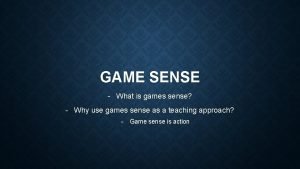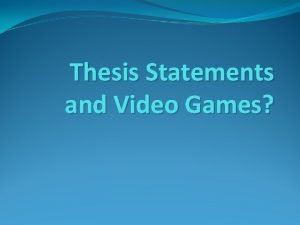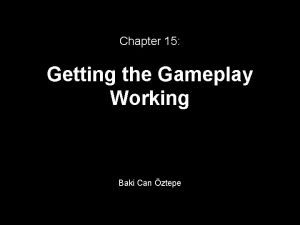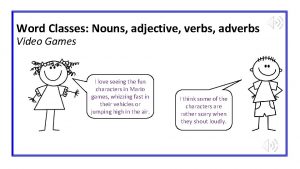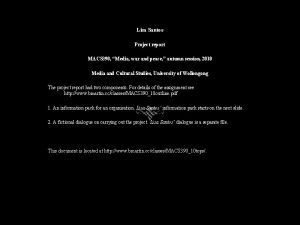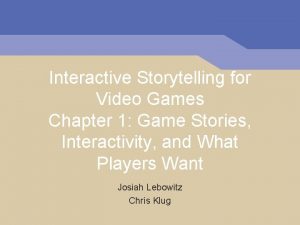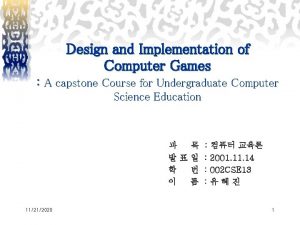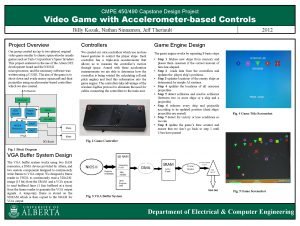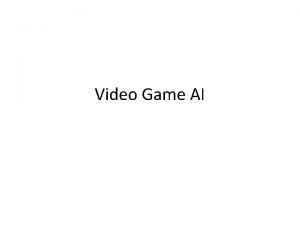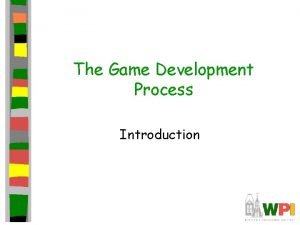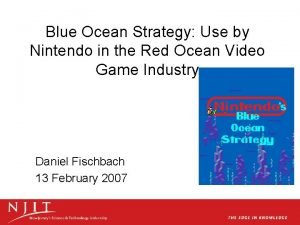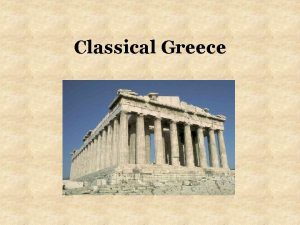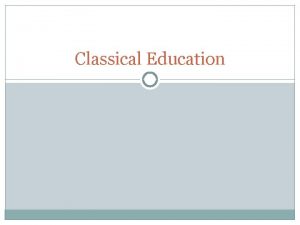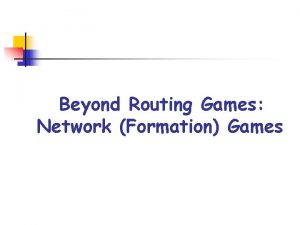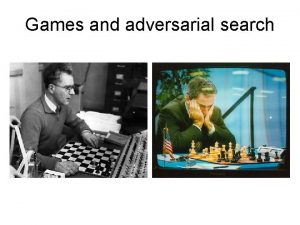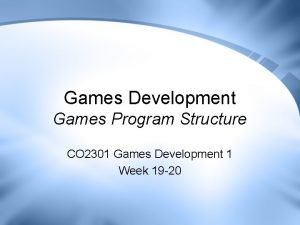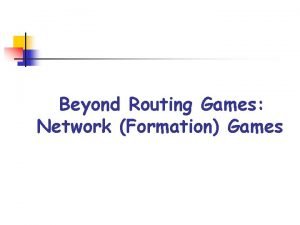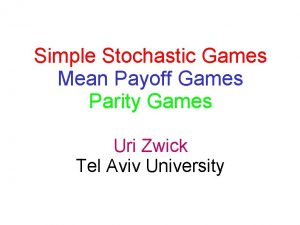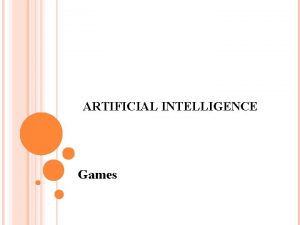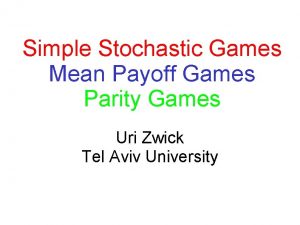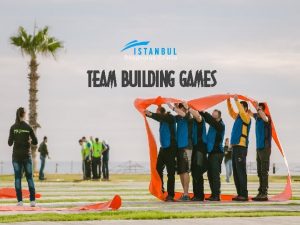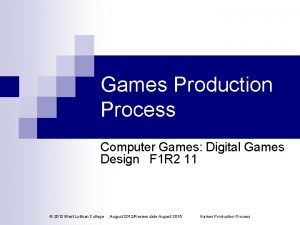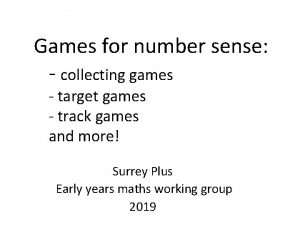Video Game AI Video Game AI Classical Games



























- Slides: 27

Video Game AI

Video Game AI • Classical Games – Focus on optimal players using computationally expensive search techniques • Video Game AI – Refers to games such as First Person Shooters, Real Time Strategy, Role Playing, Action/Arcade Games – Differs greatly from classical AI since relatively little CPU available for the AI • Focus on believable characters, behaviors • Rarely rises above the level of finite state machines

Video Game Industry January, 2008

Video Game AI • Growing area for research – E. g. Doom AI players – Starting to see AI game engines – Several research efforts in believable characters • Most video games though use simple algorithms to reduce the CPU load – Some techniques • • • Movement and Path Finding Reasoning State Machines Layered Architecture Team AI Planning

Movement and Path Finding • Many games require the AI to go from point A to point B – Generally multiple paths, obstacles, scenarios • Easy enough – we already covered A* – Optimal compared to DFS and BFS – Convert problem into a graph and run A*, problem solved?

Simple Solution to Pathfinding • Reduce map to a graph with fewer edges, only along select routes, to simplify the problem F E G C A D B If player within the rectangle then position is simply referenced as the rectangle Assume global knowledge of the game board

Movement Strategies • Can encode attack/defense strategies using a simple lookup table on the simple graph • Offense – If healthy use the attack strategy • Defense – If not healthy take the defensive strategy

Offensive Lookup Table Human A A AI B C D E F G B C D D C C D D G G E E C F F B A C A B D A B C E D D F G E E G C C F G F F E G C A D B

Defensive Lookup Table Human AI A B C D C B D D G C A C D G A B D D E E A B B F D D D G G E E C C C E F F E G F G E F G B B F E G C A D B

Lookup Table Strategy • Provides for reactive behaviors – AI reacts to the movement of the player • Stateless – No state kept between lookups – AI simply uses its position and the players position to determine the next move – Fast, efficient, no search required – Can add unpredictability by randomly selecting moves with some probability

Scaling Up • For large environments, can make a map of maps F Master Map Snowpeak Ruins E G Hyrule Castle C A Faron Woods D B

Lookup Table Problems • Tends to fall apart if the environment changes over time • Can sometimes result in bizarre behavior at the thresholds between zones and because of the vast simplification • Video example: http: //www. ai-blog. net/ – Direct link: http: //www. youtube. com/watch? v=lw 9 G-8 g. L 5 o 0

Agent Behavior and Environment • AI’s behavior ultimately grounded in the environment – Environment may change, AI should reason about the environment to perform some action, affecting environment – Closed loop of reasoning Internal State Reason Perceive Act Behavior Environment

Basic Reasoning Abilities – State Machines • Perhaps simplest and most common is the state machine; example with 3 mental states for a sentry guarding two locations At Location Y? Player dead? March to Location X Player in sight? Attack Player in sight? At Location X? March to Location Y

Finite State Machine • Could exhibit more intelligence with more states, more transitions • Simple to write and easy to debug • Predictable but can add transition probabilities for element of randomness

Basic Reasoning Abilities – Layered Behavior Architecture • Previous example only marched, attacked – What if other things on the AI’s mind? • If health low, go to the hospital • If low on ammo, go to the armory • If outnumbered, stay and fight or run for the alarm? – One solution to handle the conflict in action selection is Rodney Brooks’ subsumption architecture • Implemented for robot systems

Subsumption Architecture Behavior Priority • Responsibilities confined to isolated layers, but a layer subsumes (takes priority over) another if the need arises • Within each layer we might implement the behavior as a FSM Level 4 Survive Heal at Infirmary, Raise alarm Level 3 Sustain Reload at the Armory Level 2 Attack Eliminate Humans Level 1 Patrol March between X and Y

Basic Reasoning Abilities – Other Approaches • Machine Learning – will discuss shortly – Rote learning – Neural networks – Genetic algorithms – Others • Usually in the context of a scripting language for character behavior

Team AI • Often an entire army that must work together, how to manage the multitudes of agent AI’s? • Use the same organizational hierarchy as real life – Soldiers implemented as finite state machines or other simple mechanism; might always follow orders – Higher-level units subdivided at higher strategic levels

Team AI Hierarchy 100, 000 Army 20, 000 Division 5, 000 Brigade 500 Company 50 Platoon 10 Squad Soldier 1

Hierarchical Control • One mechanism is to define a goal and then create plans to reach that goal – Goal might be a win-situation or intermediate goal closer to a win • E. g. taking an enemy position, destroying a bridge, flanking the enemy, etc. – To reach goal must perform a series of actions – Actions may have preconditions for the action to be performed and postconditions as a result • E. g. planting a charge requires the demolitions expert, action is to plant the charge, postcondition is the target is destroyed – The plan is the set of actions that when performed in the given order achieves the goal

Sample Plan • Goal Eliminate(Player) – Preconditions • Covered_Position(Player) • Alive(Player) – Plan • • • Action 1: Identify_Flanking_Position(AI_1) Action 2: Fire_At_Player(AI_2) Action 3: Move_To_Flanking_Position(AI_1) Action 4: Fire_At_Player(AI_1) Action 5: Rush_Player(AI_2)

Planner Plan Actions Goal Action 1 Action 2 Action 3 Planner World State How do we come up with the Plan? Search! Action 4

Rule-Based AI • In a similar manner, we can also create a rulebased AI system Rules Memory Rule(s) Rule matching Fact(s) Working Memory Fact Apply Rule(s) Rule Conflict Resolution

Rule Example Working Memory (opponent-1 size 1000) (opponent-2 size 100) (army size 1000) Rule (rule “Attack weaker opponents” (< (? opponent size) 500) (> (army size) 500) --> (attack ? opponent)) After applying the rule to our working memory, we get: (attack opponent-2)

Rule-Based System • RBS could remove facts as driven by consequents to reflect the dynamic nature of the game • With a sufficient rule/fact base, can make appropriate actions, useful for RTS games – E. g. first, focus might be to build bases and collect resources because military rules not able to fire • Difficult to code the rule base; requires some CPU time to apply the rule engine with a large number of rules – Does allow strategy to be decoupled from the game engine, permit later tweaking by game developers

References • Jones, Tim. Artificial Intelligence, A Systems Approach, Infinity Science Press • http: //www. gameai. com/ • Game AI, State of the Industry: http: //www. aiwisdom. com/bytopic_stateofth eindustry. html
 What is gamesense
What is gamesense Chapter 17 hunger games questions
Chapter 17 hunger games questions Types of games indoor and outdoor
Types of games indoor and outdoor Video game thesis statement
Video game thesis statement Originality in video games
Originality in video games Columbine shooting cctv
Columbine shooting cctv About valve
About valve My.com video games
My.com video games Baki video game
Baki video game Nouns for video games
Nouns for video games Dr lisa santos
Dr lisa santos Interactive storytelling video games
Interactive storytelling video games Hevga
Hevga Capstone video games
Capstone video games Capstone video games
Capstone video games Jon festinger
Jon festinger Video games that teach history
Video games that teach history Linha do tempo video games
Linha do tempo video games Heather titus
Heather titus Open ended video games
Open ended video games Classical conditioning game
Classical conditioning game Videos yandex search
Videos yandex search Gravity yahoo
Gravity yahoo Video search yahoo
Video search yahoo Digital media primer
Digital media primer Game development timeline
Game development timeline Mathisfun tetris
Mathisfun tetris Blue ocean video game
Blue ocean video game
